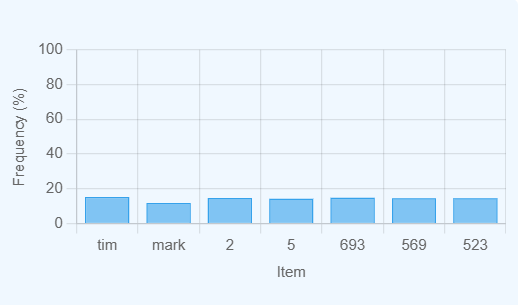 Home
Home
 Back
Back

Definition: This randomizer shuffles a list of items (numbers, names, words, etc.) into a random order, ensuring each item has an equal chance of appearing in any position. It can also select the top N items from the shuffled list.
Purpose: It is used for raffles, task assignments, random ordering of songs or games, or any scenario requiring unbiased randomization of a list.
The randomizer uses the Fisher-Yates shuffle algorithm with cryptographically secure random numbers:
\( \text{For } i \text{ from } n-1 \text{ to } 1: \text{ swap } a[i] \text{ with } a[j] \text{ where } j \text{ is random in } [0, i] \)
Where:
Steps:
List randomization is essential for:
Example 1: Randomize a list of 5 names for a raffle:
Example 2: Randomize 3 tasks for daily assignments:
Q: How random is the shuffle?
A: It uses the Fisher-Yates algorithm with cryptographically secure random numbers, ensuring unbiased shuffles. The chart for small lists demonstrates uniform distribution.
Q: Can I use it for sensitive information?
A: The tool is secure over HTTPS and does not store input, but consult your information security officer for sensitive data.
Q: What is the maximum list size?
A: Up to 100,000 items, though large lists with heavy text may face request size or memory limits. Use numerical IDs for large lists.